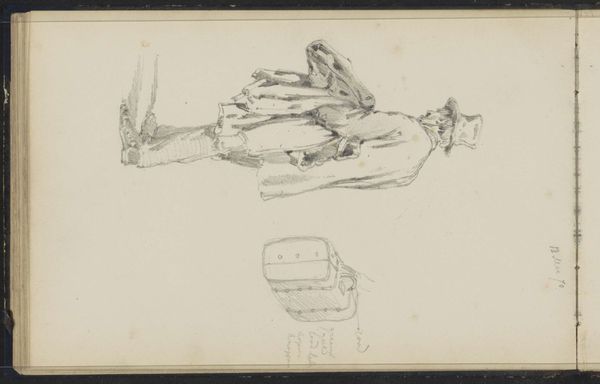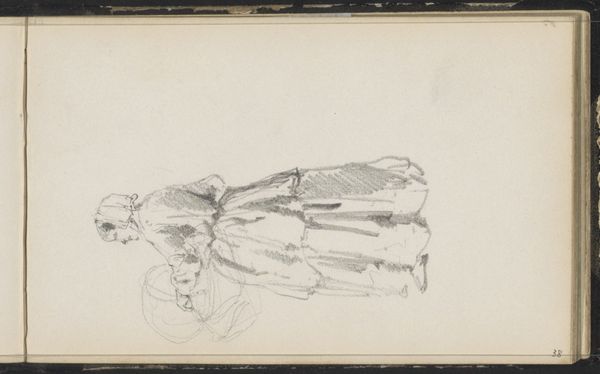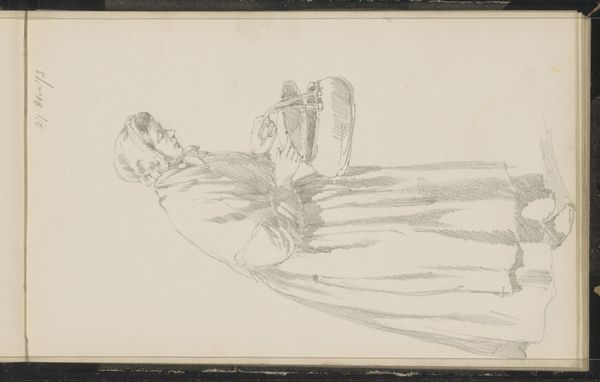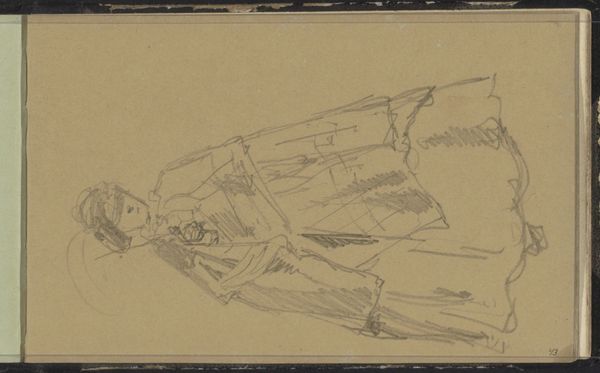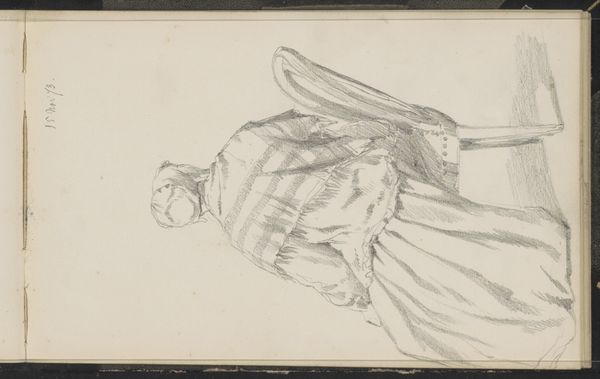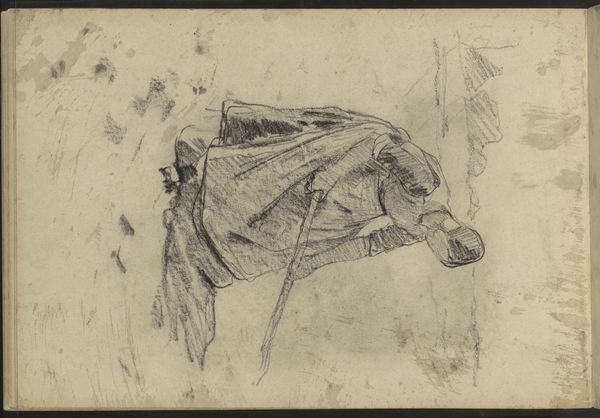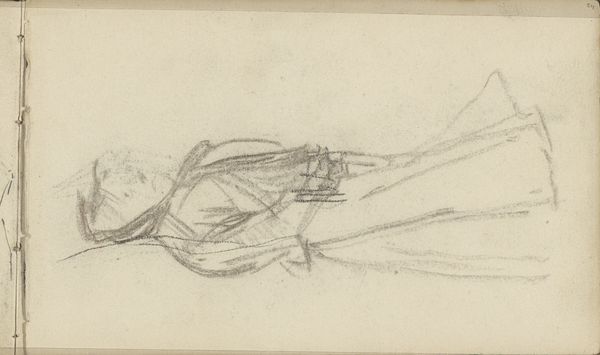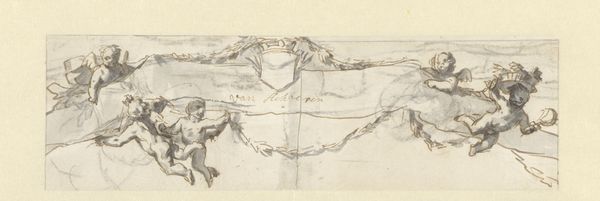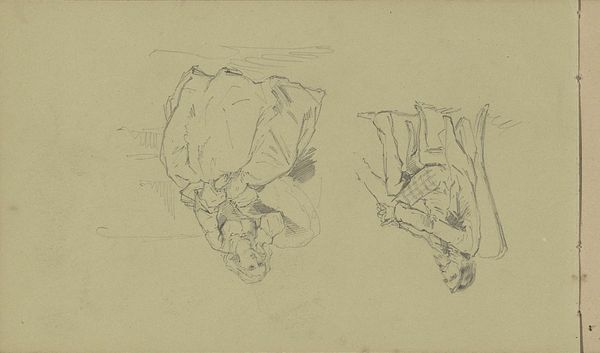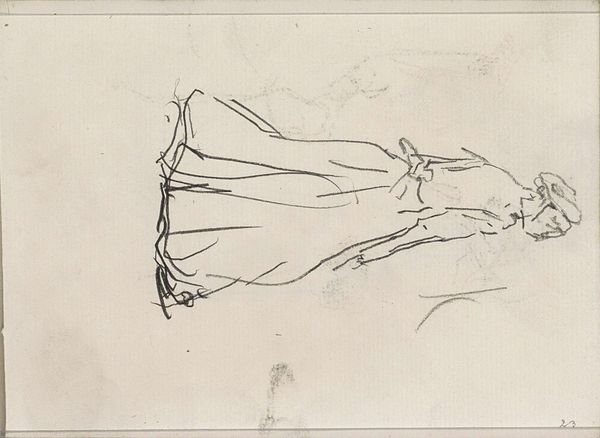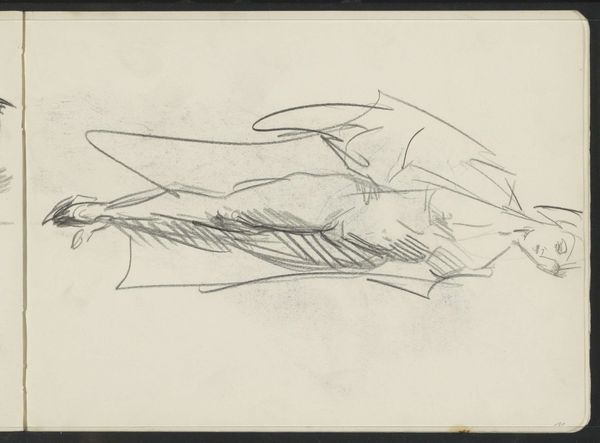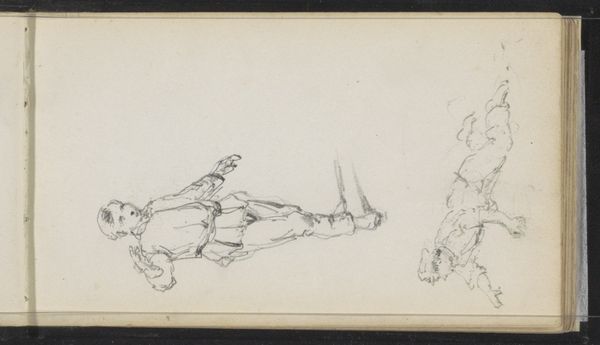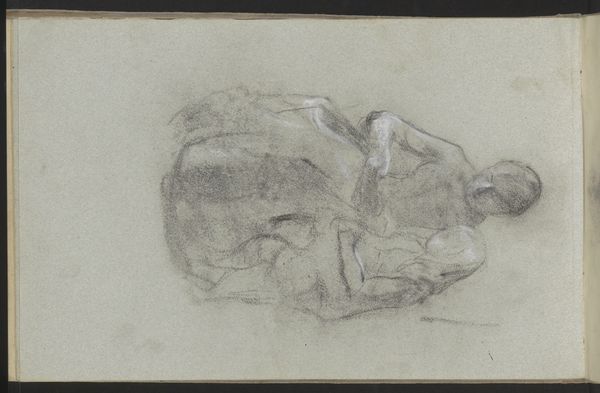
drawing, paper, pencil
#
portrait
#
drawing
#
figuration
#
paper
#
pencil
#
realism
Copyright: Rijks Museum: Open Domain
Curator: Here we have a pencil drawing on paper titled "Kostuumstudie," which translates to "Costume Study," created by Cornelis Springer around 1863. It is currently held at the Rijksmuseum. Editor: It's just a quick sketch, but even so I find it fascinating, and incredibly alive! The energy conveyed through those swiftly drawn lines – it's almost as if the garment is in motion. Curator: Springer's focus on realism, especially apparent in his architectural works, seems to inform his figuration here, even in this preliminary sketch. What purpose do you imagine costume studies played at this time? What insights can we gather by appreciating it now? Editor: Considering this study in light of material history, the textiles themselves would carry their own economic and social weight. What's most striking is the tension in how Springer renders the volume and form of the clothing versus how he leaves visible the marks of the pencil; you sense his hand present in the making. It's less about capturing an ideal and more about showing labor through line. Curator: Precisely, and examining this sketch allows us a glimpse into the process of image-making in the 19th century. This would've most likely been made for reference. Think about how paintings would typically have taken years to realize back then, or how there were public exhibitions where society carefully appraised artistic works. Drawings like this grant a more intimate perspective, showing artists at work behind the scenes. Editor: Absolutely. When viewing "Kostuumstudie", it's helpful to think about it within the network of creation; who made the paper, who made the pencil, the access to materials, how the person whose clothes are being sketched would have felt while being drawn. Each of these contextual forces become important when viewing it this way. Curator: That definitely influences my perception too. I hadn't considered those details. There's so much more at play here when thinking about how costume was shaped in the context of larger industries during this era. Editor: In viewing "Kostuumstudie" now, hopefully it will bring you into new appreciation for both the objecthood of art and the art within an object.
Comments
No comments
Be the first to comment and join the conversation on the ultimate creative platform.
